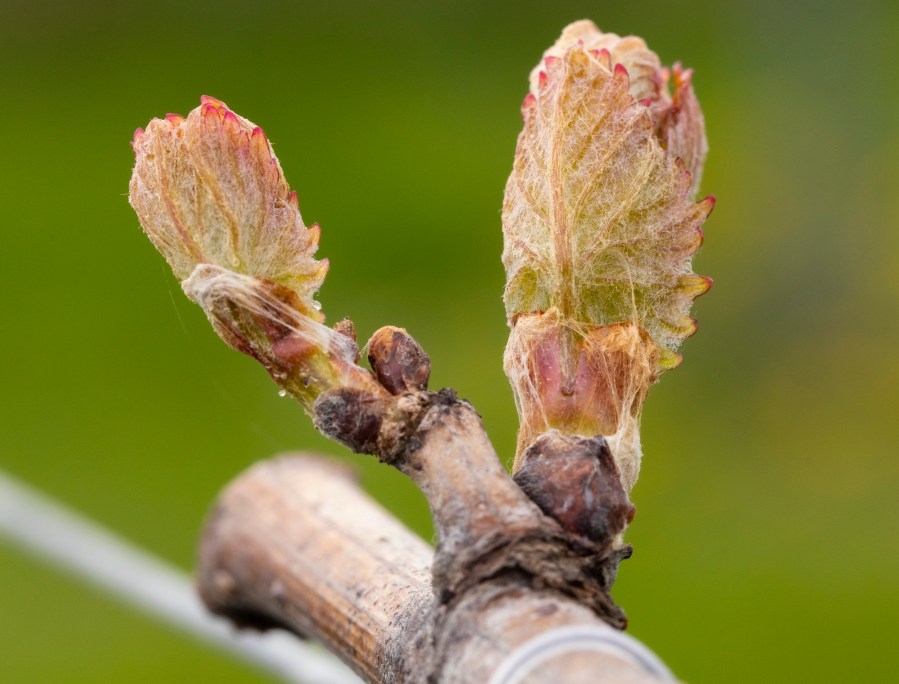Many soils have seen a large amount of nutrient leaching over recent months, particularly of water-soluble nutrients, such as nitrogen, boron and sulphur, but availability of other macro and micro nutrients could have been affected too.
In severe situations, prolonged waterlogging can impact root development, especially in newly planted vines, and reduce the activity of soil microbes involved in processes such as the breakdown of organic matter and nitrogen utilisation. So, as growth and nutritional demands increase, it is vital that any potential deficiencies or rooting issues are identified and addressed early.
Regular soil testing provides a useful indicator of overall nutrient status, but this should be supported with petiole analysis at early flowering to build a more complete picture, and crucially, highlight any potential deficiencies in time to respond. When petiole sampling at flowering, remember to take the petiole from the leaf opposite the lowest bunch position on a shoot, selecting representative vines of the same variety.
Early boost
Although petiole analysis helps fine-tune nutritional strategies through the main growing and bunch development period, it may also be beneficial to give vines an early boost before flowering starts to avoid any deficiencies compromising flowering and pollination.
A slow-release N,P,K fertiliser, such as pelletised poultry manure, may be a good option, while biostimulants based on concentrated seaweed extracts (e.g. Maxicrop, Kelpak) can also help stimulate early development, and contain some useful nutrients, such as nitrogen, phosphate, and potassium. The first application is typically from the two to three leaves unfolded stage, and may be supported with additional boron or calcium.
Boron is key to plant reproduction, giving improved flowering and fruit set, so levels must be sufficient before flowering starts. Calcium is vital for cell structure, so it is equally important to avoid any deficiencies when vines are putting on large amounts of growth.
Sulphur plays a central role in amino acid protein synthesis, so targeted granular application may be necessary to bring the soil back into balance after such a wet winter. In many cases, sulphur may be applied with magnesium (e.g. granulated kieserite), a key nutrient for chlorophyll production, and one that is prone to deficiency, especially on sandy or acidic soils.
Grapevines do not have a huge requirement for nitrogen, however it is a crucial nutrient for many plant functions and if excessive leaching, denitrification, or low soil levels cause a deficiency, this will lead to stunted growth and reduced yield potential. Deficiency is usually easy to identify, characterised by a yellowing of entire leaves, often older ones first. This is in contrast to iron deficiency, which tends to affect younger leaves and causes yellowing between leaf veins.
Additional nitrogen applications should be carefully targeted to required areas only, to avoid stimulating excessive vegetative growth on vines that do not require additional N.
Rapid uptake
If petiole analysis reveals an urgent need for certain nutrients, foliar nutrition in metalosate form has been shown to be a quick way to get nutrients into plants. Mineral nutrients are chelated with amino acids, which protects them from adverse interactions and improves absorption and translocation.
Most foliar nutrients can generally be included within the tank mix when applying other plant protection products, although, as always, check label recommendations carefully.
In contrast to foliar nutrients, uptake of soil-applied fertilisers via roots inevitably takes longer, and is subject to many more external factors. However, it does allow larger quantities of macronutrients to be applied than is possible through the leaf, so is a good option for building a solid base of soil nutrition, depending on the specific site requirements.
Mark wetspots
Given how wet the winter and early spring has been, it is a good time to mark out and record any areas of the vineyard that have suffered waterlogging, so remedial measures can be planned for later in the season.
Actions may involve subsoiling or other drainage improvements, or the establishment of cover crop mixes down alleyways to help manage soil moisture and bring other soil or biodiversity benefits.




